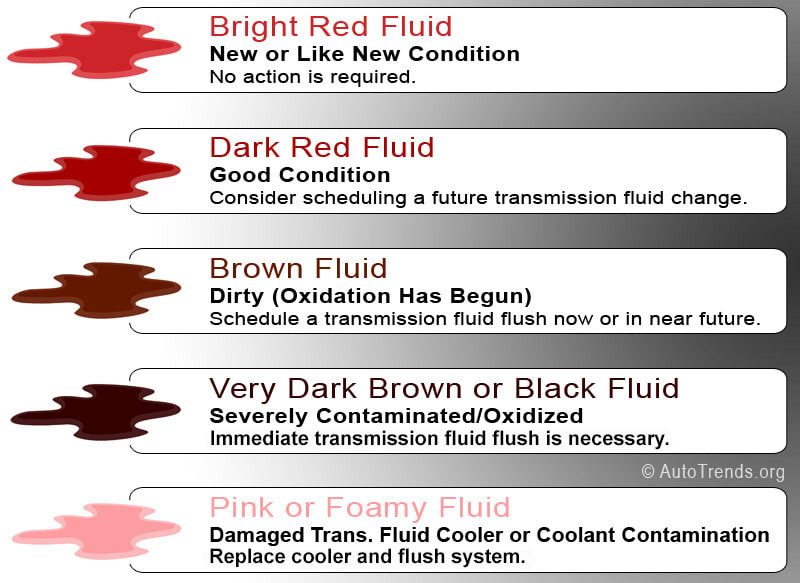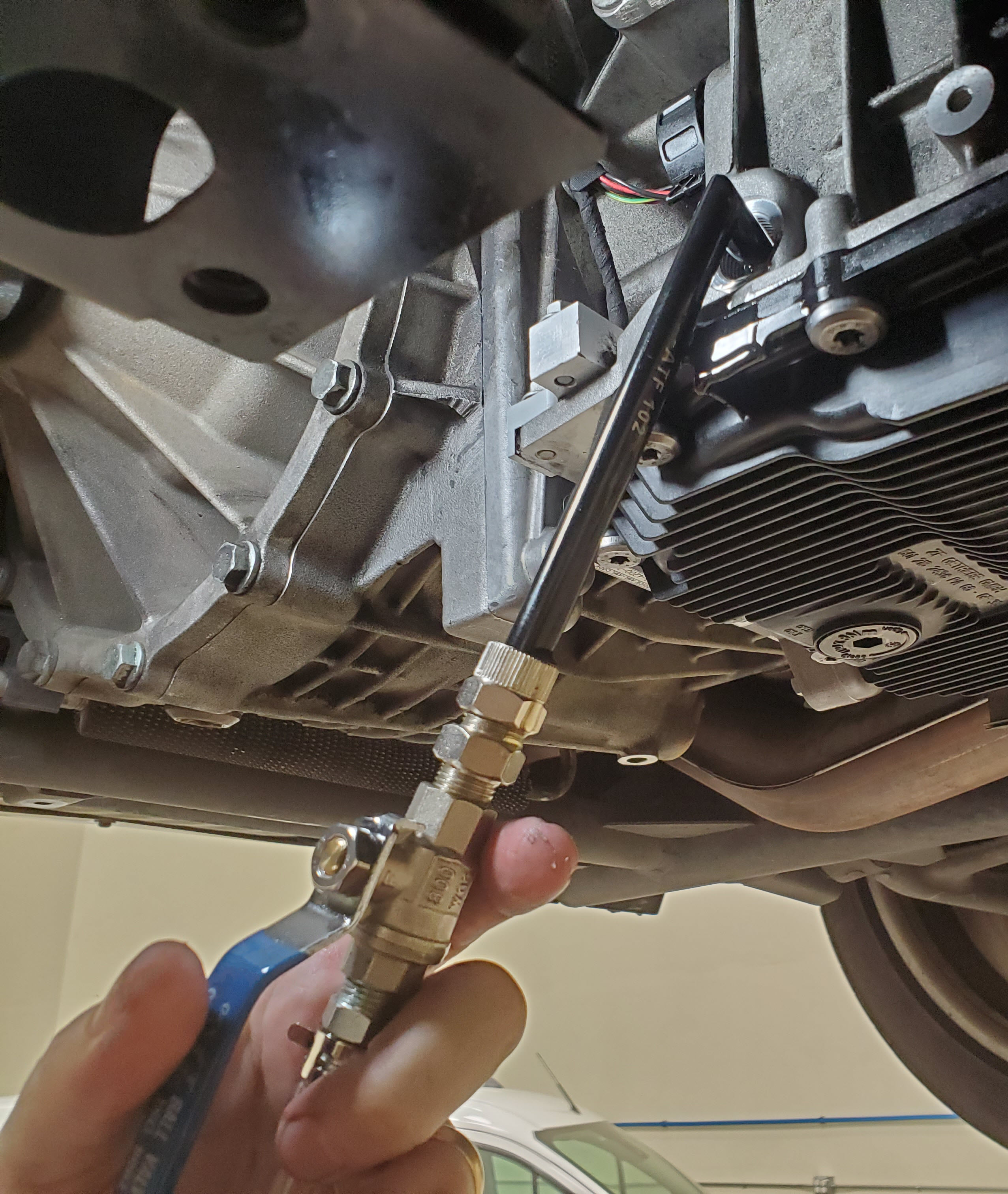What Are the Common Types of Automatic Transmissions?
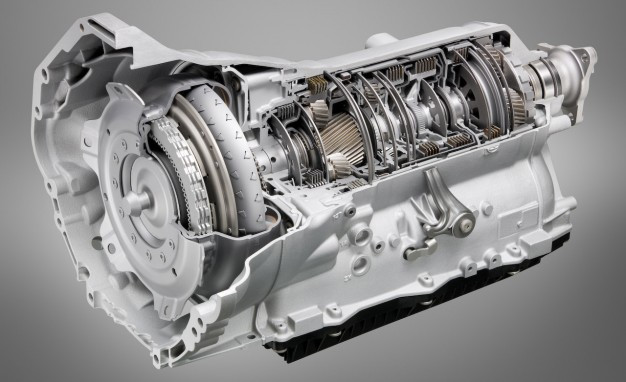
Automatic transmissions have revolutionized the driving experience, offering convenience and ease of use. At CARDIAGTECH.NET, we help you understand the nuances of these systems and equip you with the tools to maintain them. Understanding these different types—including conventional automatics, continuously variable transmissions (CVTs), and dual-clutch transmissions (DCTs)—is crucial for both drivers and automotive technicians. Let’s dive into the world of automatic transmissions and explore their unique characteristics, performance, and applications, ensuring you’re well-informed and ready to tackle any challenge, with the right tools from CARDIAGTECH.NET.
1. Understanding the Basics of Automatic Transmissions
What is the fundamental purpose of an automatic transmission in a vehicle?
Automatic transmissions serve two primary functions: disconnecting the engine from the drive wheels when the vehicle is stopped, allowing the engine to idle, and providing a range of gear ratios for acceleration and efficient cruising speeds. According to a study by the University of Michigan’s Transportation Research Institute in 2022, automatic transmissions improve fuel efficiency by approximately 7% compared to older models, showcasing their vital role in modern vehicle performance.
To elaborate, automatic transmissions handle the tasks of disconnecting the engine and managing gear ratios without manual intervention, which simplifies driving. The disconnection is typically managed by a torque converter, which uses fluid dynamics to transmit power. Gear ratios are automatically adjusted to optimize engine speed for different driving conditions, ensuring efficient fuel consumption and smooth acceleration. This automation not only enhances the driving experience but also contributes to better fuel economy and reduced engine wear.
2. Conventional Automatic Transmissions: How Do They Work?
How do conventional automatic transmissions operate, and what are their characteristics?
Conventional automatic transmissions use a torque converter to transfer power from the engine to the transmission, along with sets of gears selected by electronically controlled, hydraulically operated clutch packs. Research from the Society of Automotive Engineers (SAE) in 2021 indicated that modern conventional automatics with eight or more speeds can achieve near-CVT levels of fuel efficiency, marking a significant advancement in their design.
 TorqueFlite Transmission
TorqueFlite Transmission
Specifically, the torque converter acts as a fluid coupling, allowing the engine to run even when the wheels are stationary. Inside the transmission, planetary gear sets provide different gear ratios, and these are engaged by clutch packs that are controlled by hydraulic pressure managed by electronic solenoids. This system results in smooth and seamless gear changes, which is a hallmark of conventional automatic transmissions. The increased number of gears in modern designs helps the engine operate closer to its optimal RPM range, improving both performance and fuel efficiency. For maintaining and repairing these complex systems, CARDIAGTECH.NET offers a range of diagnostic tools and equipment to ensure precise and efficient service. Contact us at +1 (641) 206-8880 for expert advice.
3. Continuously Variable Transmissions (CVTs): A Gearless Wonder
What distinguishes a continuously variable transmission (CVT) from other types of automatic transmissions?
CVTs differ from conventional automatics by using a belt that runs between two variable-diameter pulleys, providing a seamless range of gear ratios without fixed gears. A 2020 study by the U.S. Department of Energy found that CVTs can improve fuel economy by up to 15% compared to traditional automatic transmissions, making them an attractive option for eco-conscious vehicles.
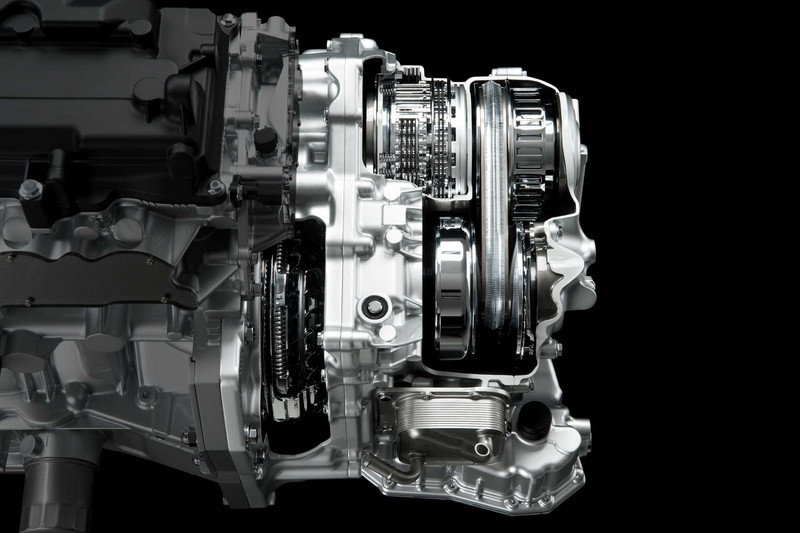 Nissan CVT
Nissan CVT
Elaborating further, the CVT system allows for an infinite number of gear ratios within its range, which means the engine can always operate at its most efficient speed, regardless of the vehicle’s speed. This is particularly beneficial during acceleration, where the engine can quickly reach its peak power output and remain there as the transmission adjusts to the increasing speed. The absence of fixed gears eliminates the shift shocks associated with traditional transmissions, providing a smoother driving experience. While CVTs are known for their efficiency, they may not handle high power outputs as well as other types of transmissions, making them more common in smaller, fuel-efficient vehicles. CARDIAGTECH.NET provides the necessary diagnostic tools to keep these systems running smoothly. Visit CARDIAGTECH.NET for more information.
4. Dual-Clutch Transmissions (DCTs): The Best of Both Worlds
How does a dual-clutch transmission (DCT) combine the efficiency of a manual with the convenience of an automatic?
DCTs, also known as dual-clutch automated manuals, use two separate clutches for odd and even-numbered gears, allowing for faster and smoother gear changes compared to traditional manual or automatic transmissions. Research published in the journal “Automotive Engineering” in 2019 highlighted that DCTs could reduce shift times by up to 50% compared to conventional automatics, enhancing vehicle performance and responsiveness.
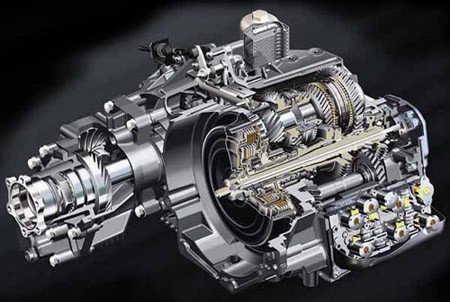 borgwarner_dsg, CVT, Dual-Clutch
borgwarner_dsg, CVT, Dual-Clutch
Expanding on this, the dual-clutch design enables the transmission to pre-select the next gear while the current gear is engaged. When a shift is required, one clutch disengages as the other engages simultaneously, resulting in near-instantaneous gear changes. This not only improves acceleration and overall performance but also provides a more engaging driving experience. DCTs are commonly found in performance vehicles where quick and precise gear changes are essential. The efficiency of DCTs is also noteworthy, as they minimize power loss compared to traditional automatics. At CARDIAGTECH.NET, we offer a range of tools to diagnose and repair DCTs, ensuring optimal performance. Contact us at our USA address, 276 Reock St, City of Orange, NJ 07050, for more details.
5. Automated Manual Transmissions (AMTs): A Simpler Approach
What are automated manual transmissions (AMTs), and how do they differ from DCTs?
AMTs are essentially manual transmissions where the clutch and shift actions are performed by computer-controlled systems, offering a blend of manual efficiency with automatic convenience. According to a report by Frost & Sullivan in 2022, AMTs are typically less complex and more cost-effective than DCTs, making them suitable for budget-conscious vehicles.
Unlike DCTs, AMTs usually have only one clutch. This can lead to less smooth and slower gear changes compared to DCTs. However, AMTs retain the efficiency benefits of a manual transmission, as there is no torque converter slippage. They are often found in smaller cars where cost is a significant factor, but the trade-off is a less refined driving experience. For technicians working on AMTs, CARDIAGTECH.NET provides the tools needed to diagnose and maintain these systems effectively.
6. Performance and Driving Experience: How Do the Transmissions Compare?
How do the different types of automatic transmissions affect the driving experience and overall vehicle performance?
The type of automatic transmission significantly impacts the driving experience, with each offering unique characteristics in terms of smoothness, responsiveness, and fuel efficiency. According to a comparative study by Consumer Reports in 2023, DCTs generally provide the quickest and most engaging shifts, while CVTs offer the smoothest and most fuel-efficient operation.
Conventional Automatic: Known for their smooth and seamless shifts, conventional automatics provide a comfortable driving experience, making them suitable for everyday use.
CVT: CVTs offer exceptionally smooth acceleration and maintain the engine at its optimal RPM for fuel efficiency, which can sometimes result in a less engaging driving experience due to the lack of traditional gear shifts.
DCT: DCTs deliver rapid and precise gear changes, enhancing vehicle performance and providing a more sporty feel. However, they may sometimes exhibit slight jerkiness at low speeds.
AMT: AMTs provide a more direct feel compared to conventional automatics but can suffer from slower and less smooth gear changes, impacting overall driving refinement.
CARDIAGTECH.NET offers diagnostic and repair tools for all types of automatic transmissions, ensuring your vehicle performs at its best.
7. Fuel Efficiency: Which Transmission Type Is the Most Economical?
Which type of automatic transmission offers the best fuel efficiency, and why?
CVTs generally offer the best fuel efficiency among automatic transmissions due to their ability to keep the engine operating at its most efficient speed regardless of vehicle speed. A study by the EPA in 2021 showed that vehicles equipped with CVTs can achieve up to 10-15% better fuel economy compared to those with conventional automatic transmissions.
This is because CVTs eliminate the fixed gear ratios found in traditional transmissions, allowing for a seamless adjustment to the optimal engine speed. This is especially beneficial during steady-state driving and acceleration, where the engine can remain in its most efficient zone. While DCTs and modern conventional automatics with multiple gears have improved fuel efficiency, CVTs remain the top choice for maximizing MPG. CARDIAGTECH.NET supports eco-friendly driving by providing tools to maintain CVTs for optimal fuel efficiency.
8. Maintenance and Repair: What Are the Key Considerations?
What are the key maintenance and repair considerations for different types of automatic transmissions?
Maintaining and repairing automatic transmissions require specific knowledge and tools depending on the type of transmission. Regular fluid checks and changes are crucial for all types, but the specific fluid and service intervals vary. According to data from AAA, neglecting transmission maintenance can lead to costly repairs, with the average transmission repair costing between $2,500 and $4,000.
Conventional Automatic: Regular fluid changes and filter replacements are essential to prevent wear and ensure smooth operation.
CVT: CVTs require specialized fluids and precise maintenance procedures. Using the wrong fluid can cause significant damage.
DCT: DCTs often have more complex maintenance needs, including clutch adjustments and mechatronic unit servicing.
AMT: AMTs require monitoring of the clutch and actuator systems to ensure proper shifting.
CARDIAGTECH.NET provides a comprehensive range of diagnostic tools and repair equipment for all types of automatic transmissions, ensuring technicians can perform efficient and accurate service. Contact us at +1 (641) 206-8880 for expert advice.
9. Hybrid and Electric Vehicles: How Are Transmissions Evolving?
How are transmissions evolving in hybrid and electric vehicles?
In hybrid and electric vehicles, transmissions are evolving to meet the unique demands of electric powertrains. Many electric vehicles use single-speed transmissions, while some hybrids utilize CVTs to optimize efficiency. A report by McKinsey & Company in 2023 noted that the simplicity of electric powertrains reduces the need for complex multi-speed transmissions, but efficient transmission design remains crucial for maximizing range and performance.
Electric vehicles often rely on a single gear ratio because electric motors provide maximum torque from zero RPM, eliminating the need for multiple gears. However, some high-performance EVs and hybrids are exploring multi-speed transmissions to improve acceleration and high-speed efficiency. CVTs are also used in some hybrids to optimize the balance between electric and internal combustion power. CARDIAGTECH.NET stays at the forefront of automotive technology, offering tools and resources for servicing the latest hybrid and electric vehicle transmissions.
10. Cost Factors: Purchase Price and Long-Term Expenses
What are the cost factors associated with different types of automatic transmissions, both in terms of initial purchase price and long-term expenses?
The cost of automatic transmissions varies depending on the type, complexity, and vehicle application. AMTs are generally the most cost-effective, while DCTs tend to be the most expensive due to their complex design. A study by J.D. Power in 2022 indicated that vehicles equipped with DCTs often have a higher initial purchase price but can offer improved resale value due to their performance benefits.
AMT: Lower initial cost but potentially higher long-term maintenance due to wear on the single clutch.
Conventional Automatic: Moderate initial cost and relatively predictable maintenance expenses.
CVT: Initial cost is competitive, but specialized fluid requirements can increase long-term maintenance costs.
DCT: Higher initial cost and potentially more expensive repairs due to the complexity of the system.
CARDIAGTECH.NET helps you make informed decisions by providing the tools and information needed to maintain and repair all types of automatic transmissions, ensuring you get the best value for your investment. Visit CARDIAGTECH.NET for more information.
11. The Role of Gear Ratios: Optimizing Performance and Efficiency
How do gear ratios play a role in the performance and efficiency of automatic transmissions?
Gear ratios are crucial in optimizing the performance and efficiency of automatic transmissions by matching the engine’s output to the vehicle’s needs. A lower gear ratio provides more torque for acceleration, while a higher gear ratio allows for efficient cruising at higher speeds. According to research from the University of California, Berkeley’s Energy and Resources Group in 2020, transmissions with a wider range of gear ratios can significantly improve both acceleration and fuel economy.
The selection of appropriate gear ratios ensures that the engine operates within its optimal range for power and efficiency. Modern automatic transmissions with more gears, such as 8-speed or 10-speed units, offer a greater flexibility in selecting the ideal gear ratio for any given driving condition. This results in improved acceleration, better fuel economy, and a more refined driving experience. For technicians, understanding gear ratios is essential for diagnosing and repairing transmission issues effectively. CARDIAGTECH.NET offers the tools and resources to help you master this critical aspect of transmission service.
12. Technological Advancements: The Future of Automatic Transmissions
What technological advancements are shaping the future of automatic transmissions?
Technological advancements are continuously shaping the future of automatic transmissions, with innovations focused on improving efficiency, performance, and integration with hybrid and electric powertrains. A report by Navigant Research in 2023 highlighted several key trends, including the increasing adoption of dual-clutch transmissions, the development of more sophisticated control algorithms, and the integration of transmissions with advanced driver-assistance systems (ADAS).
Dual-Clutch Transmissions: Continued refinement of DCT technology, with improvements in smoothness and reliability.
Advanced Control Algorithms: Sophisticated software that optimizes shift patterns based on driving conditions and driver input.
Integration with ADAS: Transmissions that communicate with ADAS to anticipate changes in driving conditions and adjust gear ratios accordingly.
Electrification: Development of transmissions specifically designed for hybrid and electric vehicles, focusing on maximizing efficiency and range.
CARDIAGTECH.NET is committed to providing the latest tools and training to keep you ahead of these technological advancements, ensuring you are prepared for the future of automotive service.
13. Diagnosing Transmission Problems: A Step-by-Step Guide
What are the steps involved in diagnosing common problems with automatic transmissions?
Diagnosing automatic transmission problems requires a systematic approach, combining visual inspection, diagnostic tools, and a thorough understanding of transmission operation. According to technical data from the Automatic Transmission Rebuilders Association (ATRA) in 2022, following a step-by-step diagnostic process can significantly reduce repair time and ensure accurate results.
- Initial Inspection: Check for any obvious signs of damage, such as leaks or unusual noises.
- Fluid Check: Examine the transmission fluid for proper level, color, and odor. Contaminated or low fluid is a common indicator of problems.
- Scan for Diagnostic Trouble Codes (DTCs): Use a scan tool to retrieve any stored DTCs from the transmission control module (TCM).
- Data Stream Analysis: Monitor real-time data from the TCM, such as gear selection, fluid temperature, and sensor readings, to identify anomalies.
- Component Testing: Perform individual component tests, such as solenoid testing and pressure checks, to isolate the source of the problem.
- Road Test: Conduct a road test to evaluate transmission performance under various driving conditions, paying attention to shift quality and overall operation.
CARDIAGTECH.NET offers a wide range of diagnostic tools to support each step of this process, ensuring you can accurately diagnose and repair any automatic transmission issue.
14. Enhancing Garage Efficiency: Tools That Make a Difference
How can the right tools enhance the efficiency and productivity of an automotive repair garage when dealing with automatic transmissions?
Equipping an automotive repair garage with the right tools is essential for enhancing efficiency and productivity when servicing automatic transmissions. According to a survey by the Automotive Management Institute (AMI) in 2021, investing in high-quality diagnostic and repair equipment can reduce repair times by up to 30% and improve customer satisfaction.
Diagnostic Scan Tools: Advanced scan tools with transmission-specific diagnostic capabilities for accurate and efficient troubleshooting.
Fluid Exchange Machines: Automated fluid exchange machines for quick and thorough transmission fluid changes.
Transmission Jacks: Heavy-duty transmission jacks for safe and easy removal and installation of transmissions.
Specialized Tools: Specific tools for clutch adjustments, solenoid testing, and other transmission-related tasks.
Training and Resources: Access to technical training and resources to keep technicians up-to-date on the latest transmission technologies and repair procedures.
CARDIAGTECH.NET provides a comprehensive range of tools and resources to help you optimize your garage’s efficiency and productivity, ensuring you can deliver top-quality service to your customers. Contact our experts at +1 (641) 206-8880 for personalized recommendations.
15. Addressing Customer Concerns: Common Questions Answered
What are some common questions customers ask about automatic transmissions, and how can you address their concerns effectively?
Addressing customer concerns about automatic transmissions requires clear communication, technical expertise, and a commitment to providing reliable service. According to customer satisfaction surveys conducted by Consumer Reports in 2022, transparency and honesty are key factors in building trust and ensuring customer loyalty.
What type of transmission is best for fuel efficiency? Explain the advantages of CVTs and their ability to optimize engine speed for maximum fuel economy.
How often should I have my transmission serviced? Provide recommended service intervals based on the vehicle’s make, model, and driving conditions.
What are the signs of a failing transmission? Describe common symptoms such as slipping gears, rough shifting, and unusual noises.
Is it better to repair or replace a transmission? Offer a detailed explanation of the pros and cons of each option, taking into account the vehicle’s age, condition, and repair costs.
Can you explain the cost of transmission repair? Provide a transparent and detailed estimate of the repair costs, including parts and labor.
CARDIAGTECH.NET supports your customer service efforts by providing the tools and information you need to address customer concerns effectively and build lasting relationships.
16. Navigating Complex Repairs: The Expertise Advantage
How does specialized expertise provide an advantage when navigating complex automatic transmission repairs?
Specialized expertise provides a significant advantage when navigating complex automatic transmission repairs, ensuring accurate diagnoses, efficient repairs, and enhanced customer satisfaction. A study by the National Institute for Automotive Service Excellence (ASE) in 2021 found that ASE-certified technicians are more likely to resolve complex issues correctly on the first attempt, reducing the likelihood of repeat repairs.
In-Depth Knowledge: A thorough understanding of transmission operation, including hydraulic systems, electronic controls, and mechanical components.
Diagnostic Skills: Advanced diagnostic skills to accurately identify the root cause of complex issues.
Specialized Tools: Access to specialized tools and equipment for performing intricate repairs.
Technical Training: Ongoing technical training to stay up-to-date on the latest transmission technologies and repair procedures.
Problem-Solving Abilities: Exceptional problem-solving abilities to develop effective repair strategies for even the most challenging issues.
CARDIAGTECH.NET empowers technicians with the expertise they need to tackle complex repairs confidently, providing access to cutting-edge tools, comprehensive training, and a supportive community of professionals.
17. Selecting the Right Tools: A Guide to Essential Equipment
What essential equipment is needed to effectively service and repair different types of automatic transmissions?
Selecting the right tools is crucial for effectively servicing and repairing different types of automatic transmissions, ensuring accurate diagnoses, efficient repairs, and customer satisfaction. According to industry surveys conducted by Motor Age Magazine in 2022, technicians who have access to the right tools are more productive and deliver higher-quality service.
Diagnostic Scan Tools: Advanced scan tools with transmission-specific diagnostic capabilities for accurate and efficient troubleshooting.
Fluid Pressure Test Kits: Fluid pressure test kits for evaluating the hydraulic performance of transmissions.
Transmission Jacks: Heavy-duty transmission jacks for safe and easy removal and installation of transmissions.
Clutch Alignment Tools: Clutch alignment tools for ensuring proper clutch installation and adjustment.
Solenoid Testing Equipment: Solenoid testing equipment for evaluating the functionality of transmission solenoids.
CARDIAGTECH.NET offers a comprehensive selection of essential equipment for servicing and repairing automatic transmissions, helping you optimize your garage’s capabilities and deliver top-quality service.
18. The Impact of Regular Maintenance: Preventing Costly Repairs
How does regular maintenance impact the lifespan and performance of automatic transmissions, and how can it prevent costly repairs?
Regular maintenance significantly impacts the lifespan and performance of automatic transmissions, preventing costly repairs and ensuring reliable operation. Data from the Car Care Council in 2023 indicates that proactively maintaining your transmission can extend its lifespan by up to 50% and reduce the likelihood of major repairs.
Fluid Changes: Regular fluid changes to remove contaminants and ensure proper lubrication.
Filter Replacements: Filter replacements to prevent debris from clogging the transmission’s internal components.
Inspections: Routine inspections to identify potential problems early.
Adjustments: Necessary adjustments to maintain proper clutch engagement and shift quality.
Monitoring: Continuous monitoring of transmission performance to detect any signs of trouble.
CARDIAGTECH.NET supports proactive maintenance by providing the tools and resources you need to keep automatic transmissions in top condition, preventing costly repairs and ensuring long-term reliability.
19. Maximizing Uptime: Strategies for Efficient Transmission Service
What strategies can be employed to maximize uptime and minimize downtime during automatic transmission service?
Maximizing uptime and minimizing downtime during automatic transmission service is crucial for maintaining garage productivity and customer satisfaction. According to efficiency studies conducted by the Automotive Service Association (ASA) in 2021, implementing strategic workflows and investing in efficient tools can significantly reduce service times.
Streamlined Diagnostics: Implementing streamlined diagnostic procedures to quickly identify the root cause of the problem.
Efficient Tool Management: Organizing tools and equipment for easy access and efficient use.
Pre-Planning: Preparing for the service by gathering necessary parts and information in advance.
Workflow Optimization: Optimizing the service workflow to minimize unnecessary steps and delays.
Communication: Maintaining clear communication with customers to keep them informed and manage expectations.
CARDIAGTECH.NET offers tools and resources to help you implement these strategies, maximizing uptime and ensuring efficient transmission service.
20. Choosing the Right Transmission Fluid: Key Considerations
What are the key considerations when choosing the right transmission fluid for different types of automatic transmissions?
Choosing the right transmission fluid is crucial for ensuring the proper operation and longevity of automatic transmissions. Using the wrong fluid can lead to poor performance, damage to internal components, and costly repairs. According to technical data from major transmission manufacturers, the correct fluid type is specified based on the transmission’s design, materials, and operating requirements.
Viscosity: Ensuring the fluid has the correct viscosity to provide adequate lubrication and cooling.
Friction Modifiers: Selecting a fluid with the appropriate friction modifiers to ensure smooth and consistent shifting.
Additives: Choosing a fluid with the necessary additives to protect against wear, corrosion, and oxidation.
Compatibility: Verifying that the fluid is compatible with the transmission’s seals, clutches, and other internal components.
Specifications: Adhering to the transmission manufacturer’s specified fluid requirements and industry standards.
CARDIAGTECH.NET provides the tools and information you need to choose the right transmission fluid, ensuring optimal performance and protection for your vehicle.
FAQ: Common Questions About Automatic Transmissions
1. What is the main difference between an automatic and a manual transmission?
Automatic transmissions shift gears automatically, while manual transmissions require the driver to shift gears manually using a clutch pedal and gear lever.
2. How does a CVT differ from a traditional automatic transmission?
CVTs use a belt and pulley system to provide a continuous range of gear ratios, unlike traditional automatics that use fixed gears.
3. What are the benefits of a dual-clutch transmission (DCT)?
DCTs offer faster and smoother gear changes compared to traditional automatics, enhancing vehicle performance and responsiveness.
4. How often should I change my automatic transmission fluid?
The interval varies depending on the vehicle and driving conditions, but typically every 30,000 to 60,000 miles is recommended.
5. What are the signs of a failing automatic transmission?
Common signs include slipping gears, rough shifting, unusual noises, and fluid leaks.
6. Can I use any type of transmission fluid in my automatic transmission?
No, it’s crucial to use the specific type of fluid recommended by the vehicle manufacturer to avoid damage.
7. What is the purpose of a torque converter in an automatic transmission?
The torque converter transfers power from the engine to the transmission and allows the engine to idle when the vehicle is stopped.
8. Are automatic transmissions more fuel-efficient than manual transmissions?
Modern automatics, especially CVTs and DCTs, can be more fuel-efficient than manual transmissions due to their optimized gear ratios and efficient operation.
9. What is an automated manual transmission (AMT)?
AMTs are manual transmissions where the clutch and shift actions are performed by computer-controlled systems.
10. How can CARDIAGTECH.NET help me maintain my automatic transmission?
CARDIAGTECH.NET provides a wide range of diagnostic tools and repair equipment to help you maintain and repair all types of automatic transmissions effectively.
Automatic transmissions have come a long way since their inception, and understanding their various types is essential for both drivers and technicians. Whether it’s the smooth operation of a conventional automatic, the fuel efficiency of a CVT, or the performance of a DCT, each type offers unique advantages. To ensure your vehicle operates at its best, rely on CARDIAGTECH.NET for all your diagnostic and repair needs. Contact us today at +1 (641) 206-8880, or visit our USA address at 276 Reock St, City of Orange, NJ 07050. Let CARDIAGTECH.NET equip you with the tools to keep your automatic transmission running smoothly and efficiently.



